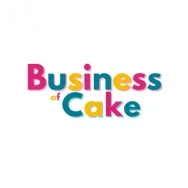A Labelling Guide for Home Bakers in the UK to Understand the Rules for Pre-Packaged and Non-Pre-Packaged products
If you’re baking cakes from home and selling them to the public, whether at local markets, online, or through word of mouth, you have legal responsibilities when it comes to labelling to comply with UK food law.
This guide will walk you through the essential labelling requirements for both pre-packaged and non-pre-packaged cakes in the UK.
What Counts as Pre-Packaged vs Non-Pre-Packaged?
Before we get into the requirements, it’s important to know which category your products fall into:
- Pre-packed products (PPDS – prepacked for direct sale) : These are wrapped, sealed or packaged before the customer orders or selects them. For example, cakes in boxes, bags, or containers, ready for sale at a stall or cake shed.
- These require FULL ingredients label.
- Non-pre-packed products: These are sold loose or packaged after the customer makes a selection. Think: products served from a display at a market where the consumer chooses individual items.
- These require allergen advice at the point of sale, for example verbally or on signs near display.
- These require allergen advice at the point of sale, for example verbally or on signs near display.
- Distance Selling: These are orders that are taken via a website, social media, phone etc.
- These orders require allergen advice in two places:
- At the point of order
- On delivery
- These orders require allergen advice in two places:
Cake Labelling Guide
If your product is prepacked, and therefore needs a full label, it must include the following:
- Product Name
- e.g. “Victoria Sponge Cake” or “Chocolate Brownie”
- Ingredients List
- List all ingredients in descending order by weight.
- Use the heading: Ingredients.
- Allergens
- Highlight allergens clearly on ingredients list (e.g. in bold, CAPITALS, or underlined).
- QUID (Quantitative Ingredient Declaration)
- If the product name mentions an ingredient, you must show the percentage of that ingredient of the recipe.
- Date & Storage
- Best Before or Use-By Date (as appropriate).
- Storage Instructions (e.g. “Keep refrigerated” or “Store in a cool, dry place”).
- Net Weight (if needed)
- Only needed if you sell by weight or price per weight.
e.g. “200g” - Not needed if sold by number (e.g. “Pack of 5 cookies”).
- Only needed if you sell by weight or price per weight.
- Business Details
- Include your business name and address.
- Special Ingredient Declarations
- If your product includes any of the following, you must state it clearly on the label:
- Sweetners, eg aspartame
- Liquorice
- Caffeine
- Polyols
- For certain colourings, you must also state:
- “May have an adverse effect on activity and attention in children”
- These colourings are:
- Sunset yellow FCF (E110)
- Quinoline yellow (E104)
- Carmoisine (E122)
- Allura red (E129)
- Tartrazine (E102)
- Ponceau 4R (E124)
- These colourings are:
- “May have an adverse effect on activity and attention in children”
- If your product includes any of the following, you must state it clearly on the label:
- Precautionary Allergen Labelling (e.g. “May contain”)
- Only use these warnings if there’s a real risk of cross-contamination that you cannot fully control, even with cleaning and separation.
How to present your food label
The label on your products should be:
- Clear and easily visible without opening the pack
- Information on labels should be indelible
- Writing should be no smaller than x height of 1.2 mm, or 0.9mm for labels smaller than 80cm2 (this roughly equates to Times New Roman size 8, or 6 for the smaller label) Different fonts will differ
Allergen advice guide:
If your cake does not require a full ingredient label, advice on allergens must be provided clearly.
- In person – ie, a market stall, allergy advice must be available for consumers to review, staff must also know, or know where to find, information relating to the individual products.
- You could have signs next to each product with the included allergens, or signs requesting people ask for information advice.
- For products sold by distance selling, allergens present in the products must be available
- At the point of order
- On the website, menu or verbally
- On delivery of the product.
- This could take the form of an allergen sticker highlighting the allergens present, or cake information advice sheets.
- At the point of order
The information provided in this article is aimed at home based baking businesses in the UK, and this intended as guidance – not an alternative to your own allergen training which is required by UK food law.
References:
https://www.food.gov.uk/business-guidance/business-guidance/packaging-and-labelling



